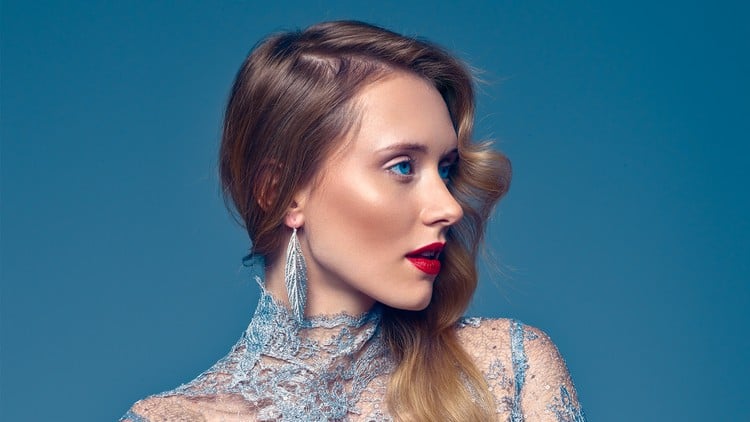Color grading is a powerful tool in fashion photography, transforming ordinary images into captivating works of art. It helps define a photographer’s unique style, setting their work apart in an oversaturated industry.
Whether you’re a budding photographer or an experienced professional, mastering color grading can elevate your visual storytelling and create a lasting impression.
Understanding Color Grading in Fashion Photography
Color grading is the process of adjusting colors, contrast, and tones to achieve a specific mood or aesthetic in an image. Unlike color correction, which focuses on fixing color imbalances, color grading is more about artistic interpretation. It allows photographers to enhance the emotion of an image, making it more impactful and aligned with their creative vision.
The Role of Color Psychology
Color has a profound effect on emotions and perception. In fashion photography, different color tones evoke various feelings:
- Warm tones (reds, oranges, yellows): Create a sense of energy, passion, and vibrancy.
- Cool tones (blues, greens, purples): Evoke calmness, sophistication, and mystery.
- Muted or pastel tones: Suggest softness, elegance, and nostalgia.
- High-contrast and bold colors: Generate drama and intensity.
By understanding color psychology, photographers can craft compelling narratives through their images.
Developing a Signature Color Style
A distinctive color grading style helps a photographer build brand recognition. Think of renowned fashion photographers—many have a recognizable color palette that makes their work instantly identifiable. To develop your own style, consider these key factors:
1. Define Your Aesthetic
Your aesthetic is the foundation of your signature style. Start by analyzing the mood and emotions you want to convey in your fashion photography.
Do you lean towards bold, high-contrast visuals that exude confidence, or do you prefer soft, ethereal tones that evoke nostalgia? Look at your past work and pinpoint recurring color trends.
Explore the works of established photographers and cinematographers, dissecting their use of colors, shadows, and highlights to create atmosphere.
Building an aesthetic requires intentionality—consider how your chosen hues align with your creative vision and brand identity.
2. Experiment with Color Palettes
A well-crafted color palette can dramatically alter the perception of an image. Experiment with complementary, monochromatic, or split-toned color schemes to find what best represents your style.
Advanced tools in Adobe Lightroom, Photoshop, and Capture One allow for detailed adjustments of hue, saturation, and luminance. Instead of applying changes arbitrarily, work towards a specific mood, whether it’s a moody editorial shoot or a fresh and vibrant fashion campaign.
Keeping a library of reference images and mood boards can help refine your selections and maintain cohesiveness across projects.
3. Use LUTs and Presets Wisely
LUTs (Look-Up Tables) and presets offer a valuable starting point for color grading but should never be relied upon blindly. While they can provide efficiency, each image is unique, requiring fine-tuning to ensure the color grading complements the lighting and composition.
Customizing presets allows for a more refined and distinctive style. Consider creating a personalized set of LUTs based on your most commonly used adjustments, ensuring consistency while still maintaining creative control.
4. Maintain Consistency
A signature style is built through consistency. When working on a series of fashion images, establish a set of color grading parameters that remain uniform across all edits. This could involve a dedicated color workflow, reference images, or a consistent adjustment of specific tones.
Consistency doesn’t mean rigidity—evolution is natural—but having an identifiable color story strengthens your portfolio and brand recognition.
Tools like batch processing in Lightroom and Capture One can streamline this process while preserving accuracy.
5. Draw Inspiration from Art and Film
Great colorists often draw inspiration from outside the realm of photography. Study how classical painters manipulated light and shadow or how renowned filmmakers use color grading to build emotion.
Films like “Blade Runner 2049” with its cinematic neon hues or “The Grand Budapest Hotel” with its carefully curated pastel tones offer masterclasses in color composition.
Understanding historical and contemporary color theories will deepen your knowledge and help you craft a style that transcends trends, making your fashion photography stand out in a competitive industry.
Essential Tools for Color Grading
Several software programs can help achieve stunning color grades:
- Adobe Lightroom: User-friendly for beginners with powerful color grading tools.
- Adobe Photoshop: Advanced controls for detailed color adjustments.
- Capture One: Preferred by many professional fashion photographers for its superior color handling.
- DaVinci Resolve: Primarily used for video but excellent for high-end color grading.
For those looking to streamline their workflow, professional Fashion Photo Editing services can help achieve consistent, high-quality results.
The Impact of Color Grading on Fashion Photography
A well-executed color grade can transform the perception of a fashion image. It enhances mood, highlights textures, and aligns the visuals with a brand’s identity.
A consistent color palette across an editorial campaign or social media feed can establish strong brand recognition.
Final Thoughts
Color grading is more than just an editing step—it’s an art form that defines your creative voice in fashion photography. By understanding color psychology, refining your techniques, and maintaining consistency, you can develop a signature style that sets your work apart. Experiment, learn, and let your unique vision shine through every image.

